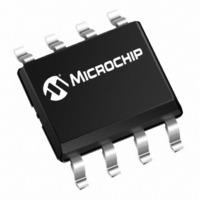TC649EUA Microchip Technology, TC649EUA Datasheet - Page 18

TC649EUA
Manufacturer Part Number
TC649EUA
Description
IC PWM FAN SPD CTRLR SD 8-MSOP
Manufacturer
Microchip Technology
Type
Controller - PWM Fanr
Specifications of TC649EUA
Applications
Fan Controller, Brushless (BLDC)
Number Of Outputs
1
Voltage - Supply
3 V ~ 5.5 V
Operating Temperature
-40°C ~ 85°C
Mounting Type
Surface Mount
Package / Case
8-MSOP, Micro8™, 8-uMAX, 8-uSOP,
Motor Type
PWM
No. Of Outputs
1
Output Current
5mA
Output Voltage
4.4V
Supply Voltage Range
3V To 5.5V
Driver Case Style
MSOP
No. Of Pins
8
Operating Temperature Range
-40°C To +85°C
Product
Fan / Motor Controllers / Drivers
Operating Supply Voltage
3 V to 5.5 V
Supply Current
400 uA
Mounting Style
SMD/SMT
Rohs Compliant
Yes
Lead Free Status / RoHS Status
Lead free / RoHS Compliant
Current - Output
-
Voltage - Load
-
Lead Free Status / Rohs Status
Lead free / RoHS Compliant
Available stocks
Company
Part Number
Manufacturer
Quantity
Price
Company:
Part Number:
TC649EUA
Manufacturer:
Microchip Technology
Quantity:
300
TC646B/TC648B/TC649B
5.0
5.1
The PWM frequency of the V
capacitor value attached to the C
quency will be 30 Hz (typical) for a 1 µF capacitor. The
relationship between frequency and capacitor value is
linear, making alternate frequency selections easy.
As stated in previous sections, the PWM frequency
should be kept in the range of 15 Hz to 35 Hz. This will
eliminate the possibility of having audible frequencies
when varying the duty cycle of the fan drive.
A very important factor to consider when selecting the
PWM frequency for the TC646B/TC648B/TC649B
devices is the RPM rating of the selected fan and the
minimum duty cycle that you will be operating at. For
fans that have a full-speed rating of 3000 RPM or less,
it is desirable to use a lower PWM frequency. A lower
PWM frequency allows for a longer time-period to mon-
itor the fan current pulses. The goal is to be able to
monitor at least two fan current pulses during the on-
time of the V
Example: The system design requirement is to operate
the fan at 50% duty cycle when ambient temperatures
are below 20°C. The fan full-speed RPM rating is
3000 RPM and has four current pulses per rotation. At
50% duty cycle, the fan will be operating at
approximately 1500 RPM.
EQUATION
If one fan revolution occurs in 40 msec, each fan pulse
occurs 10 msec apart. In order to detect two fan current
pulses, the on-time of the V
20 msec. With the duty cycle at 50%, the total period of
one cycle must be at least 40 msec, which makes the
PWM frequency 25 Hz. For this example, a PWM fre-
quency of 20 Hz is recommended. This would define a
C
5.2
As discussed in previous sections, the V
has a range of 1.20V to 2.60V (typical), which repre-
sents a duty cycle range on the V
100%, respectively. The V
as representing temperatures. The 1.20V level is the
low temperature at which the system requires very little
cooling. The 2.60V level is the high temperature, for
which the system needs maximum cooling capability
(100% fan speed).
DS21755B-page 18
F
Time for one revolution (msec.)
capacitor value of 1.5 µF.
APPLICATIONS INFORMATION
Setting the PWM Frequency
Temperature Sensor Design
OUT
output.
IN
OUT
voltages can be thought of
OUT
pulse must be at least
=
F
OUT
output is set by the
pin. The PWM fre-
60
----------------------- -
1500
output of 0% to
IN
1000
analog input
=
40
One of the simplest ways of sensing temperature over
a given range is to use a thermistor. By using a NTC
thermistor, as shown in Figure 5-1, a temperature-
variant voltage can be created.
FIGURE 5-1:
Circuit.
Figure 5-1 represents a temperature-dependent, volt-
age divider circuit. R
R
parallel resistor combination that will be referred to as
R
increases, the value of R
R
V
desired relationship for the V
ize the response of the SENSE network and aids in
obtaining the proper V
perature range. An example of this is shown in
Figure 5-2.
If less current draw from V
thermistor should be chosen. The voltage at the V
can also be generated by a voltage output temperature
sensor device. The key is to get the desired V
age-to-system (or component) temperature relation-
ship.
The following equations apply to the circuit in
Figure 5-1.
EQUATION
In order to solve for the values of R
temperatures at which they are to occur, need to be
selected. The variables T1 and T2 represent the
selected temperatures. The value of the thermistor at
these two temperatures can be found in the thermistor
IN
TEMP
TEMP
1
and R
increases as temperature increases, giving the
(R
will decrease with it. Accordingly, the voltage at
TEMP
2
R
are standard resistors. R
T
V T1
V T2
= R
1
T
* R
=
=
is a conventional NTC thermistor,
IN
Temperature Sensing
T
--------------------------------------------- -
R TEMP T1
--------------------------------------------- -
R TEMP T2
voltages over the desired tem-
/ R
T
V
2003 Microchip Technology Inc.
DD
DD
decreases and the value of
V DD
V DD
1
IN
R
R
+ R
I
is desired, a larger value
1
2
DIV
input. R
T
). As the temperature
R 2
R 2
+
+
1
, R
1
R 2
R 2
1
and R
helps to linear-
2
V
, V
IN
IN
T
and the
IN
form a
IN
volt-
pin












